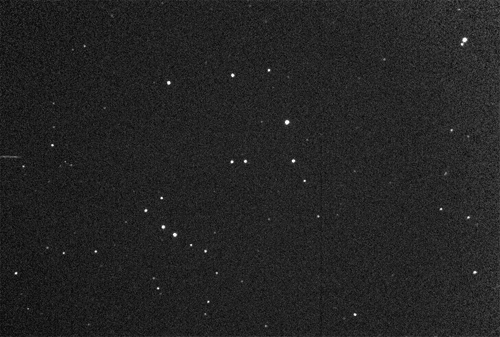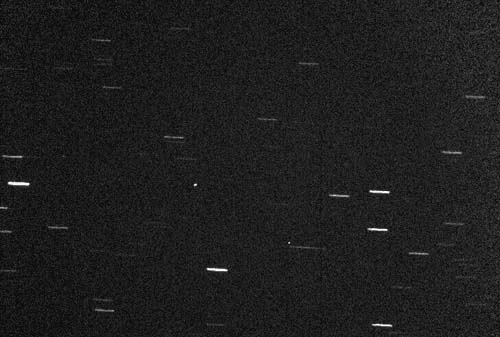E
EarthlingX
Guest
http://www.jpl.nasa.gov : Small Asteroid to Pass Within Earth-Moon System Tuesday
October 11, 2010
A newly-discovered car-sized asteroid will fly past Earth early Tuesday. The asteroid, 2010 TD54, will make its closest approach to Earth at 6:51 EDT a.m. (3:51 a.m. PDT). Image credit: NASA/JPL
PASADENA, Calif. -- A small asteroid will fly past Earth early Tuesday within the Earth-moon system. The asteroid, 2010 TD54, will have its closest approach to Earth's surface at an altitude of about 45,000 kilometers (27,960 miles) at 6:50 EDT a.m. (3:50 a.m. PDT). At that time, the asteroid will be over southeastern Asia in the vicinity of Singapore. During its flyby, Asteroid 2010 TD54 has zero probability of impacting Earth. A telescope of the NASA-sponsored Catalina Sky Survey north of Tucson, Arizona discovered 2010 TD54 on Oct. 9 at (12:55 a.m. PDT) during routine monitoring of the skies.
2010 TD54 is estimated to be about 5 to 10 meters (16 to 33 feet) wide. Due to its small size, the asteroid would require a telescope of moderate size to be viewed. A five-meter-sized near-Earth asteroid from the undiscovered population of about 30 million would be expected to pass daily within a lunar distance, and one might strike Earth's atmosphere about every 2 years on average. If an asteroid of the size of 2010 TD54 were to enter Earth's atmosphere, it would be expected to burn up high in the atmosphere and cause no damage to Earth's surface.
The distance used on the Near Earth Object page ) is always the calculated distance from the center of Earth. The distance stated for 2010 TD54 is 52,000 kilometers (32,000 miles). To get the distance it will pass from Earth's surface you need to subtract the distance from the center to the surface (which varies over the planet), or about one Earth radii. That puts the pass distance at about 45,500 kilometers (28,000 miles) above the planet. NASA detects, tracks and characterizes asteroids and comets passing close to Earth using both ground-and space-based telescopes. The Near-Earth Object Observations Program, commonly called "Spaceguard," discovers these objects, characterizes a subset of them, and plots their orbits to determine if any could be potentially hazardous to our planet.
JPL manages the Near-Earth Object Program Office for NASA's Science Mission Directorate in Washington. JPL is a division of the California Institute of Technology in Pasadena.
More information about asteroids is available at http://www.jpl.nasa.gov/asteroidwatch/ . You can also follow the latest news about asteroids on Twitter at @asteroidwatch .





